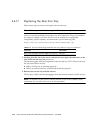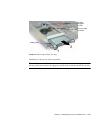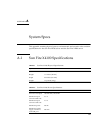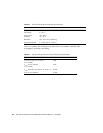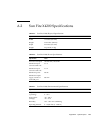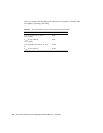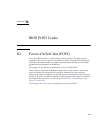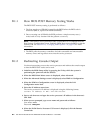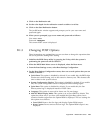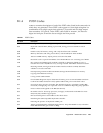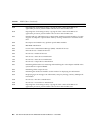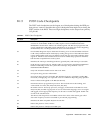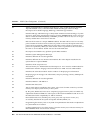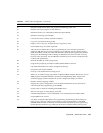
B-2 Sun Fire X4100 and Sun Fire X4200 Servers Service Manual • June 2006
B.1.1 How BIOS POST Memory Testing Works
The BIOS POST memory testing is performed as follows:
1. The first megabyte of DRAM is tested by the BIOS before the BIOS code is
shadowed (that is, copied from ROM to DRAM).
2. Once executing out of DRAM, the BIOS performs a simple memory test (a
write/read of every location with the pattern 55aa55aa).
Note – This memory test is performed only if Quick Boot is not enabled from the
Boot Settings Configuration screen. Enabling Quick Boot causes the BIOS to skip the
memory test. See Section B.1.3, “Changing POST Options” on page B-3 for more
information.
3. The BIOS polls the memory controllers for both correctable and uncorrectable
memory errors and logs those errors into the service processor.
B.1.2 Redirecting Console Output
Use these instructions to access the service processor and redirect the console output
so that the BIOS POST codes can be read.
1. Initialize the BIOS Setup utility by pressing the F2 key while the system is
performing the power-on self-test (POST).
2. When the BIOS Main Menu screen is displayed, select Advanced.
3. When the Advanced Settings screen is displayed, select IPMI 2.0 Configuration.
4. When the IPMI 2.0 Configuration screen is displayed, select the LAN
Configuration menu item.
5. Select the IP Address menu item.
The service processor’s IP address is displayed using the following format:
Current IP address in BMC: xxx.xxx.xxx.xxx
6. Start a web browser and type the service processor’s IP address in the browser’s
URL field.
7. When you are prompted, type a user name and password as follows:
User name: root
Password: changeme
8. When the ILOM Service Processor GUI screen is displayed, click the Remote
Control tab.



